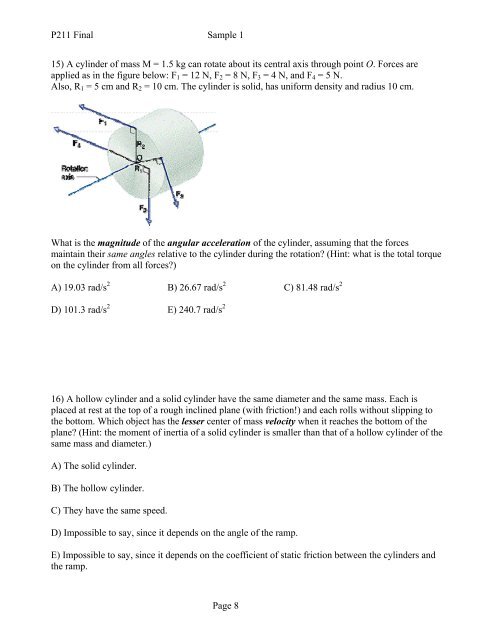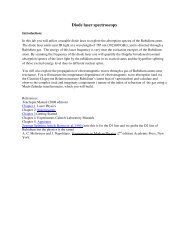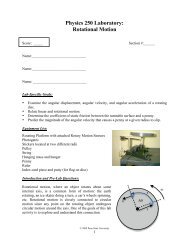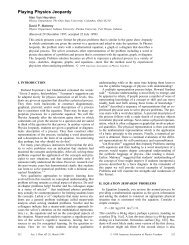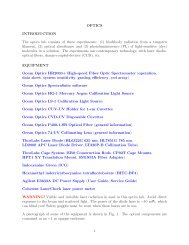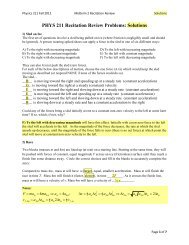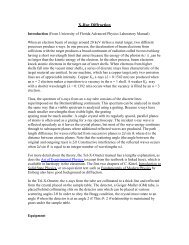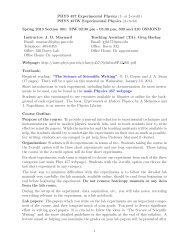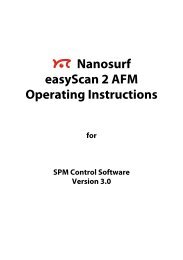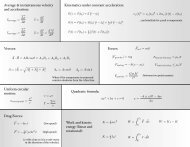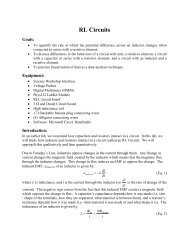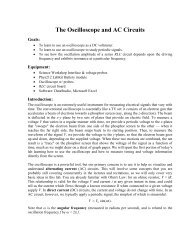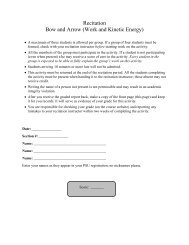0 5 10 15 20 25 30 0 2 4 6 Time (s) X (m) 8
0 5 10 15 20 25 30 0 2 4 6 Time (s) X (m) 8
0 5 10 15 20 25 30 0 2 4 6 Time (s) X (m) 8
Create successful ePaper yourself
Turn your PDF publications into a flip-book with our unique Google optimized e-Paper software.
P211 Final Sample 1<br />
<strong>15</strong>) A cylinder of mass M = 1.5 kg can rotate about its central axis through point O. Forces are<br />
applied as in the figure below: F 1 = 12 N, F 2 = 8 N, F 3 = 4 N, and F 4 = 5 N.<br />
Also, R 1 = 5 cm and R 2 = <strong>10</strong> cm. The cylinder is solid, has uniform density and radius <strong>10</strong> cm.<br />
What is the magnitude of the angular acceleration of the cylinder, assuming that the forces<br />
maintain their same angles relative to the cylinder during the rotation? (Hint: what is the total torque<br />
on the cylinder from all forces?)<br />
A) 19.03 rad/s 2 B) 26.67 rad/s 2 C) 81.48 rad/s 2<br />
D) <strong>10</strong>1.3 rad/s 2 E) 240.7 rad/s 2<br />
16) A hollow cylinder and a solid cylinder have the same diameter and the same mass. Each is<br />
placed at rest at the top of a rough inclined plane (with friction!) and each rolls without slipping to<br />
the bottom. Which object has the lesser center of mass velocity when it reaches the bottom of the<br />
plane? (Hint: the moment of inertia of a solid cylinder is smaller than that of a hollow cylinder of the<br />
same mass and diameter.)<br />
A) The solid cylinder.<br />
B) The hollow cylinder.<br />
C) They have the same speed.<br />
D) Impossible to say, since it depends on the angle of the ramp.<br />
E) Impossible to say, since it depends on the coefficient of static friction between the cylinders and<br />
the ramp.<br />
Page 8


